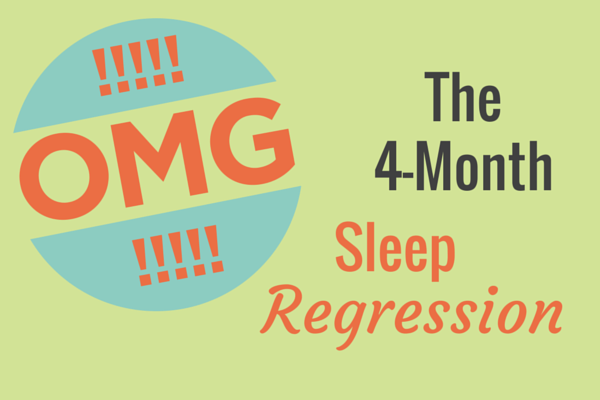Sleep regressions. They’re one of the most challenging hurdles to overcome when you’re a sleep-deprived new parent. The 4 month sleep regression is natural and can be helped with a few sleep tips.
One minute you have this perfect, little gorgeous baby who sleeps. And all is right with the world. Then, suddenly, your baby is waking up frequently and not going back to sleep or skipping naps. Not fun. And also unavoidable. But there is a light at the end of the tunnel! Let’s break down the first sleep regression period – the 4 month sleep regression.
Sign Up For Our Newsletter
What is the 4 month sleep regression? (Or, why is my baby doing this to me???)
At this stage in their lives, babies begin to sleep more like adults. That is, they can no longer block out their incredibly loud siblings, the sounds of the grocery store or the party going on around them. Unlike their newborn selves, they no longer spend a lot of time in deep sleep and they now sleep in cycles – between light and deep sleep. Just like adults. (Your baby is growing up already!)
These light and deep sleep cycles mean your baby will wake more often. When they’re in the state of partial arousal, babies may need your help with falling asleep again. They might need the environment in which they fell asleep to be recreated (like being rocked or nursed to sleep). This is perfectly okay in the short term. But what about the long term solution?
What can I do about my babies 4 month sleep regression?
This is a great opportunity to start guiding your baby into healthy sleep. If you’re ready, at this point babies can be encouraged to fall asleep on their own and in their own sleep environment.
How do you do this? Here are a few of my recommendations:
- Give them a consistent place to sleep. Put them to down to nap in the same place where they sleep at night. I encourage motionless sleep because vibration or motion during sleep can force the brain to stay in a lighter sleep state and reduce the restorative power of sleep. Crib sleep is the best.
- Put them down drowsy, but not asleep. This helps them be okay with their crib and surroundings. If they’re comfortable and happy, they will go to sleep on their own.
- Establish an early bedtime. You always want to avoid putting down an overtired baby. Early bedtime is key.
- Practice a consistent, soothing routine. A regular routine will help them get used to bedtime and will assist them in falling asleep on their own.
Remember to be consistent and try not to beat yourself up. This is a learning process for both of you! But with consistency and guidance, you can help your baby get through the regression and become an independent (and great) sleeper! And don’t forget – our consultants can help with you with 4 month sleep regression support.

Alanna McGinn is a Certified Infant and Toddler Sleep Consultant and Founder of Good Night Sleep Site – a Global Pediatric and Family Sleep Team. She provides free child and family sleep support through her Facebook, Twitter, and Instagram. She invites you to join her sleep community as she works towards Good Night Sleep Site’s mission of a healthier rested family unit. For more sleep tips please visit Good Night Sleep Site.






